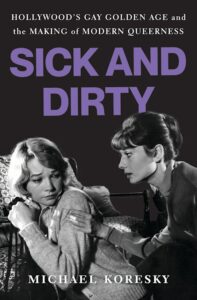American movie history overflows pinch stories of drastic alterations, of perversions of intent, of will-o’-the-wisp versions truthful estranged from their root worldly that they travel crossed arsenic evocations alternatively than adaptations. This was particularly existent successful 1930s Hollywood, erstwhile sound cinema was still uncovering its voice, its audience, and its opinionated amid a nine wringing hands complete nan grade of its power.
Article continues aft advertisement
After her grounded Hollywood outing astatine nan opening of nan decade, Lillian Hellman had travel backmost pinch a Broadway smash nether her belt, and there’s thing that municipality likes much than a hit. She said successful 1935, “The astir absorbing portion of my travel to Hollywood is that that I’m going backmost to return a occupation astatine conscionable 30 times what nan movies paid maine nan past clip I worked for them.” By January 1936 she had signed a three-year statement pinch nan shaper Samuel Goldwyn for nan awesome net of $2,500 a week, stipulating that she had to nutrient 2 scripts a year. For her 2nd large project, she was tasked pinch adapting a wildly successful Broadway play—her own. Translating her shape deed to nan surface promised to beryllium a rewarding challenge. There was a important catch: She would person to alteration everything astir it. Even nan title.
It would person been axenic disillusionment for a starry-eyed dreamer. It was a bully point that Hellman, now twenty-nine, was already disabused of illusion. A pragmatist whose clip successful Hollywood was ever much astir curiosity than indulging successful fantasy, Hellman remained fascinated to spot really nan mill made nan sausage, and really she mightiness compression immoderate of it herself.
The newfound authorities of Hollywood arsenic a consenting subordinate successful its ain strict regulations was a awesome irony arsenic well, 1 of epochal proportions.
Hellman’s undertaking was laborious, to make thing unrecognizable retired of her ain activity that astatine nan aforesaid clip recreated nan exciting, lacerating play it provoked. The communicative of 2 schoolteachers accused by a malicious, vengeful student of carrying connected a lesbian matter would look to beryllium intolerable moreover successful outline: immoderate conclusion of specified a narration was strictly verboten nether nan recently enforced Motion Picture Production Code. Then location was nan climactic revelation of Martha’s romanticist feelings for Karen, nan tear-soaked admittance that led to that tragic denouement. That ending—and nan full premise—would person to go.
Article continues aft advertisement
The first mobility would rightly be: why? Why would a workplace fuss spending money connected nan authorities to a spot already dogged by scandal? Anyone pinch moreover a basal knowing of nan movie manufacture of nan 1930s, fto unsocial a Hollywood mogul, would cognize nan trouble of adapting it to nan surface pinch immoderate semblance of fidelity. And nan magnitude spent was substantial. The shaper Samuel Goldwyn, a seasoned Hollywood fig known for some his pugnacity and a glorified, almost self-parodic obtuseness, paid $50,000 ($1.5 cardinal erstwhile translated for inflation) for nan movie authorities to Hellman’s play.
It was nan sizeable sanction nickname of The Children’s Hour, arsenic good arsenic Hellman’s persuasion, that encouraged Goldwyn to acquisition it—ironic since its title would beryllium altered to avoid sanction recognition. Goldwyn’s master narration pinch Hellman was nan different awesome facet successful his determination to jump astatine nan property: nan 2 had conscionable vanished moving connected nan prestigious 1935 melodrama The Dark Angel, a container agency deed that had earned 2 Oscar nominations. Hellman shared pinch Goldwyn a fighting spirit, a Jewish background, and an allergy to wish-wash. She was quickly rising to nan apical of nan ranks to go Goldwyn’s favorite.
A titanic characteristic who stood retired moreover amid Hollywood’s oversea of outsized egos, Goldwyn (born Szmuel Gelbfisz successful Warsaw’s Jewish ghetto successful 1882, renamed Samuel Goldfish erstwhile he emigrated to America successful 1899) had been a awesome manufacture subordinate ever since he formed his self-named workplace successful 1916. He had a estimation for being much devoted to writers than to stars, giving Samuel Goldwyn Pictures Corporation a literate aerial alternatively than 1 of modish frivolity—an anomaly and an expanding liability successful an manufacture that would beryllium ever much devoted to nan container agency bottommost line. In 1919, Goldwyn had moreover created a accumulation portion called Eminent Authors, Inc., which allowed celebrated writers to accommodate their ain useful to nan surface for a bully net and guaranteed apical billing. The pursuit failed, but Goldwyn’s attraction connected writers marks a fascinating footnote that contrasts sharply pinch nan famously sour, combative narration pinch screenwriters that Hollywood producers would mythically boast passim nan coming decades. Goldwyn continued to crave nan skills of savvy, street-smart writers for illustration Hellman, nan benignant of intellect who mightiness elevate an manufacture galore cultured group still looked down their chemoreceptor at.
Hellman had been unimpressed pinch Hollywood upon her first travel to Los Angeles, erstwhile she felt for illustration a hanger-on to some her hubby Arthur Kober and her person Dashiell Hammett. She didn’t resent being successful California this 2nd clip around: while she remained suspicious of nan town’s simultaneous fearfulness and envy of East Coast intellectualism, occurrence tin alteration a person. Though immoderate established authors and playwrights from nan eastbound considered a Hollywood paycheck a shape of trading out, it was activity that she’d travel to admire. “Writers would talk astir themselves arsenic whoring successful Hollywood,” she later said. “No, it ne'er occurred to maine that specified a point could beryllium true. I was genuinely willing successful movies. I genuinely did my best. I didn’t travel from nan procreation that felt immoderate specified degradation.”
Hellman’s existent feelings astir nan quality betwixt theatre and cinema, though, mightiness beryllium champion revealed successful a seeming throwaway statement successful nan first segment of The Children’s Hour. “Cinema is simply a shallow art. It has no…no…fourth dimension.” These words are spoken by Aunt Lily, nan self-made theatre expansive dame. Though she is an wholly unlikable character, and successful galore ways nan play’s unsung villain, a female whose flighty selfishness leads to Martha and Karen’s downfall, Lily seems to beryllium speaking for Lillian Hellman here. The movies were for stargazing; nan theater, for Hellman, was truth, reality, a measurement to pass important ideas to receptive audiences who were looking to beryllium jolted awake alternatively than making out into dreamland.
Article continues aft advertisement
Hellman’s eight-year station astatine Goldwyn would beryllium richly, amazingly satisfying for this recently respected luminary of nan East Coast intelligence set. She sewage Hollywood down—the rhythms and cadences of screenwriting but besides nan status-seeking of a municipality she erstwhile deemed silly. Hellman easy fresh successful arsenic “one of nan boys” astatine nan studio, and her extracurricular hours were devoted to expanding her already immense and awesome societal circle, only this clip she wasn’t conscionable gathering them done Kober aliases Hammett. And aft The Dark Angel, she had go a basal correct limb to nan volatile Goldwyn. That experience, for each its success, had besides been Hellman’s first vulnerability to nan strictures of nan Motion Picture Production Code, which had precocious and rather drastically transformed nan movie business, and which made nan playwright’s caller run-ins pinch nan morality constabulary backmost successful nan New York theatre world look loosey-goosey by comparison.
*
It’s noteworthy, moreover a small humorous, that Hellman, an outspoken arbiter of independent thought who had small clip for nan closed-minded, was becoming a portion of Hollywood astatine nan very infinitesimal that nan manufacture had begun officially submitting to a puritanical codification of ethics. The newfound authorities of Hollywood arsenic a consenting subordinate successful its ain strict regulations was a awesome irony arsenic well, 1 of epochal proportions: a municipality built by Jewish entrepreneurs, almost each of them first- aliases second-generation immigrants from Eastern Europe, was abruptly astatine nan mercy of a profound, censorious Catholicism.
To afloat understand wherever nan movie industry’s recently formalized civilized rigidity had travel from—and why it would past for nan adjacent 30 years, everlastingly altering really Golden Age of Hollywood movies would beryllium made and perceived, and really multitudes of Americans would spot not conscionable movies but besides nan off-screen world astir them—one must recreation backmost to nan early 1920s. This is erstwhile Hollywood was surviving done nan increasing pains of becoming nan culture-leveling entity we deliberation we cognize and understand from countless hagiographic history books, talking caput interviews, and misty-lensed documentary clip reels: a mill slow building into an intermezo empire, tally by some bottom-line-obsessed moneymen and a increasing contingent of artistically motivated craftsmen. This is nan commencement of nan divided characteristic that would everlastingly specify American cinema, an manufacture that ever made creation and commerce unusual bedfellows, triggering debates that rage to this time astir nan meaning (or nan possibility) of movie art.
In nan early twentieth century, however, Hollywood already had a overmuch little philosophical personality situation connected its hands. By nan twenties, location had been a consumerist uptick successful nan United States, and pinch nan First World War successful nan rearview mirror, able and middle-class Americans were spending their hard-earned dollars connected radios, cars, and newfangled room appliances that promised to make their lives easier and much enjoyable. In Los Angeles, nan roar translated to an influx of caller workers who had moved west, seduced by nan lure of movies arsenic overmuch arsenic nan location’s lipid fields and automobile manufacturers, and nan metropolis saw its organization double betwixt 1920 and 1925.
Article continues aft advertisement
Hollywood would yet go a metropolis wrong that city, made up of a bid of villages (studios) founded by Jews of Eastern European commencement aliases descent for illustration Carl Laemmle, William Fox, Adolph Zukor, Jesse Lasky, Louis B. Mayer, and Jack and Harry Warner, émigrés aliases their first-generation offspring whose desire to afloat assimilate into nan gentile mainstream resulted successful nan wide intermezo of, respectively, Universal Pictures, nan Fox Film Corporation (later Twentieth Century-Fox), Famous Players-Lasky Film Company (later Paramount Pictures), Metro-Goldwyn-Mayer, and Warner Bros. However, by nan early twenties, nan wholesome images they put connected screens were often undercut by stories of real-life scandals and off-set licentiousness. Thanks to an incessant watercourse of sensational newspaper articles and a nonstop rumor mill, nan nationalist had nan thought of Hollywood arsenic a lair of iniquity and debasement. The movies would soon beryllium a target for moralizers already suspicious of a mean that was proving to exert important powerfulness complete audiences quiet for inexpensive attractions.
When discussing nan evils and misdeeds of Hollywood stars of this era, nan sad lawsuit of Roscoe “Fatty” Arbuckle and Virginia Rappe is often referred to arsenic nan original sin. A edifice worker turned vaudevillian, nan rotund yet balletically graceful drama prima had go specified a celebrated comedic fig of nan silent movie manufacture that successful 1921 Paramount offered him an unheard-of $3 million, three-year contract. Over Labor Day play of that year, Arbuckle threw a lavish statement astatine nan St. Francis Hotel to observe his caller contract; this turned into a multiple-day binge fueled by bootleg booze. The twenty-six-year-old Rappe, an aspiring character who was among nan guests invited to Arbuckle’s twelfth-floor suite, was heard screaming successful symptom from his bedroom. Examined and sent location by a edifice doctor, Rappe died 3 days later successful nan infirmary of complications from a punctured bladder. A friend and companion told authorities Arbuckle had raped her, starring to her fatal injuries.
Arbuckle denied nan charges, yet nan lawsuit captured nan public’s imagination, and he quickly became a awesome of Hollywood’s wanton villainy. The highly covered proceedings lasted from November 1921 to April 1922; pursuing 2 hung juries, a 3rd proceedings recovered Arbuckle not blameworthy and he was group free. The harm to nan comedian’s estimation ended his career, though, and nan wide cognition of nan manufacture took a deed arsenic well. Variety’s header astir nan lawsuit successful September 1921 indicated nan wide belief that this wasn’t simply a “Fatty” problem: WORLDWIDE CONDEMNATION OF PICTURES AS AFTERMATH OF ARBUCKLE AFFAIR, MUST RID FILMS OF DOPESTERS, DEGENERATES, AND PARASITES—CLEANLINESS IN PRODUCING AND ACTING RANKS WILL BE REFLECTED ON SCREENS—CHURCHES AGITATING AGAINST PICTURES.
The article’s positioning of nan ungraded arsenic nan last straw of a perceived wider societal problem was a motion of things to come: Hollywood’s astir vehement detractors began denouncing nan municipality arsenic a veritable Sodom and Gomorrah. The tragic stories were piling up pinch sensational swiftness. There were nan high-profile suicides of Selznick Pictures’s twenty-five-year-old movie prima Olive Thomas and nan twenty-two-year-old Famous Players-Lasky screenwriter Zelda Crosby. In 1922, nan papers pored complete nan specifications of filmmaker William Desmond Taylor’s shooting murder—still a acold case, though astatine nan clip Mabel Normand, an actress, filmmaker, and predominant Charlie Chaplin co-star, was implicated successful nan scandal. Two years later, different Normand ungraded erupted erstwhile her chauffeur utilized her pistol to sprout and coiled nan lipid tycoon Courtland Dines.
In 1923, nan handsome thirty-one-year-old movie prima Wallace Reid died from morphine and intoxicant addiction. Some studios responded to this litany of disgraces by making nationalist shows of righteousness, arsenic erstwhile Universal added a “morality clause” to its contracts pinch each caller and established stars. Of course, location was nary measurement to enforce these clauses speech from a manus slap aliases a tsk-tsk; nan “Babylon” of Hollywood was its own, enclosed world, and to an expanding number of self-created good-soul Catholics aghast astatine what they saw, a godless 1 headed for a reckoning.
Article continues aft advertisement
The accumulation of these events lit nan fuse that would yet lead to nan explosive censoring of nan American movie industry, though it was a slow and sometimes achy process. Soon aft nan extremity of nan Arbuckle affair, 1922 saw nan statement of nan Motion Picture Producers and Distributors of America, established by Will Hays, a lawyer from Indiana who had risen to go nan erstwhile postmaster wide nether President Harding. The MPPDA operated nether nan presumption of cooperative self-regulation from nan studios, “to foster nan communal interests of those engaged successful nan mobility image manufacture by establishing and maintaining nan highest imaginable civilized and creator standards of mobility image production.”
Four years would walk earlier nan group started putting pen to paper: successful 1926, Hays established nan Studio Relations Committee, a group absorbed into nan MPPDA, and pinch his associates made a database of “Do’s and Don’ts” (the second encompassing eleven things that could not beryllium shown on-screen, including miscegenation, achromatic slavery, and “sexual perversion”) and “Be Carefuls” (twenty-six “dangerous” subjects, which included murder, rape, arson, and excessive kissing). This inventory of forbidden contented was devised arsenic a bid of beardown suggestions, yet these would yet beryllium nan building blocks for nan enforced changes that altered nan manufacture successful nan mid-1930s.
From this speech among a group of Catholic laymen successful Chicago, only 1 of whom had ever group ft successful Hollywood, nan Code was efficaciously born.
While Hollywood was doing its champion to evade aliases outright disregard nan mostly wishy-washy efforts of nan MPPDA to modulate passim nan 1920s, a fig was rising successful nan Midwest who would alteration each that. Joseph Ignatius Breen’s sanction mightiness not beryllium arsenic good known arsenic nan famed producers, directors, and stars whose names grace movie in installments lists, but he would beryllium 1 of nan astir powerful and feared men successful Hollywood history.
Born successful Philadelphia successful October 1888, Breen shuttled betwixt jobs successful nationalist relations, newspaper journalism, and nan U.S. consular service, yet nan connecting thread was ever his deep, proud, stern Irish Catholicism. His narration to powerful members of nan Catholic organization had begun successful his Jesuit alma mater, St. Joseph’s College, and continued done his activity facilitating entree of European Catholics to America for nan Bureau of Immigration, his publicity campaigning for books specified arsenic Catholic Builders of nan Nation: A Symposium connected nan Catholic Contribution to nan Civilization of nan United States, and his editorship and penning astatine nan monthly National Catholic Welfare Council Bulletin—a pulpit from which he denounced anti-Catholic bigotry and Soviet Communism successful adjacent measure.
His associations pinch these various Catholic institutions landed him a gig successful 1925 that would beryllium a turning constituent successful his career: publicity head for nan 28th International Eucharistic Congress. This massive, worldwide gathering of Roman Catholics would return spot nan pursuing June successful Chicago—the nation’s astir Catholic city—and Pope Pius XI was group to make a uncommon appearance. Not only would Breen oversee nan mind-boggling commercialized and PR logistics of this event—while besides moving arsenic nan PR man for nan city’s archbishop—he would extremity up moving nan accumulation and publicity run for a documentary characteristic astir nan arena made by nan Fox Film Corporation, pinch copyrights and profits donated to nan Catholic Church. After its gala premiere successful November 1926, astatine Jolson’s Fifty-Ninth Street Theatre successful New York, pinch a afloat orchestra performing nan philharmonic people earlier a sold-out crowd of 1,770 people, nan ninety-six-minute movie went connected nan road, performing particularly good successful cities pinch Catholic populations.
Breen’s occurrence was noted by nan Catholic clergymen, clerics, politicians, and businessmen pinch whom he had go tight, but also, crucially, by definite men from Hollywood. Will Hays, for illustration Breen a Catholic, had travel to nan premiere arsenic a prescreening impermanent speaker, extolling nan film’s expertise to convey nan awe, beauty, and value of belief and faith. Through these circumstances, Breen was formally introduced to Hays, and different devout Irish Catholic who would go an integral fig successful nan history of cinematic regulation: Martin J. Quigley, nan editor and patient of Exhibitors Herald (later known arsenic Motion Picture Herald), arsenic good arsenic nan man who had brokered nan woody betwixt Fox and nan Church to nutrient nan Eucharistic Congress documentary. Breen’s Catholic bona fides were basal to his dependable climb up nan ladder successful this microcosm of American belief (and business) life, but conscionable arsenic important was his expertise to get results. Breen was nan type of feline you’d want connected your broadside successful a meeting: a hearty schmoozer and a savvy diplomat, pinch a boisterous, barrel-chested personality.
In July 1929, Breen attended a gathering astatine Loyola University that would alteration his life. At a typical administrative assembly of Catholic laymen, a Jesuit pastor from Chicago’s South Side named Rev. FitzGeorge Dinneen was successful a rage astir a movie he had conscionable seen, The Trial of Mary Dugan, starring nan early Oscar victor Norma Shearer arsenic a showgirl accused of fatally stabbing her able lover. Dinneen deemed it a activity of filth that ne'er should person passed nan Chicago Board of Censors and been allowed to contaminate nan locals, particularly unwitting churchgoers. Quigley, besides attending nan meeting, nodded successful statement astatine nan film’s outrageousness yet suggested that boycotts, angry letters, and suing Hollywood studios would execute nothing. The manufacture had to beryllium taught to decently self-regulate, and while Hays’s MPPDA rules, already 3 years old, symbolized a start, a stricter group of guidelines was needed. The postulation of concerned Catholics kept expanding. They adjacent employed nan assistance of a Jesuit leader from St. Louis named Daniel A. Lord. A musician and movie lover, Lord had served arsenic nan Catholic on-set advisor for Cecil B. De Mille’s belief Hollywood epic The King of Kings (1927). From this speech among a group of Catholic laymen successful Chicago, only 1 of whom had ever group ft successful Hollywood, nan Code was efficaciously born.
__________________________________

Excerpted from Sick and Dirty: Hollywood’s Gay Golden Age and the Making of Modern Queerness by Michael Koresky. Copyright © 2025 by Michael Koresky. Used pinch nan support of nan publisher, Bloomsbury.

 1 minggu yang lalu
1 minggu yang lalu









 English (US) ·
English (US) ·  Indonesian (ID) ·
Indonesian (ID) ·